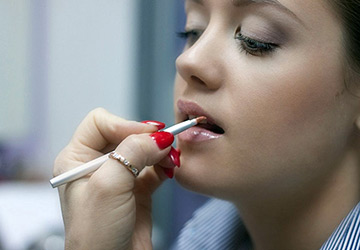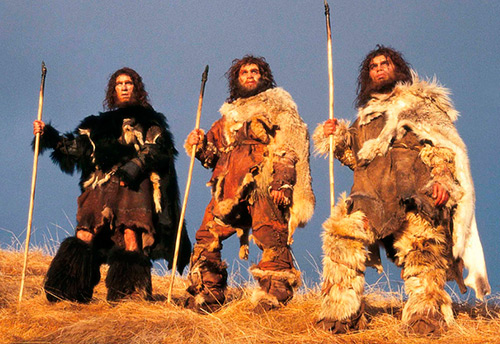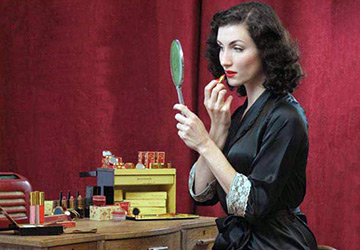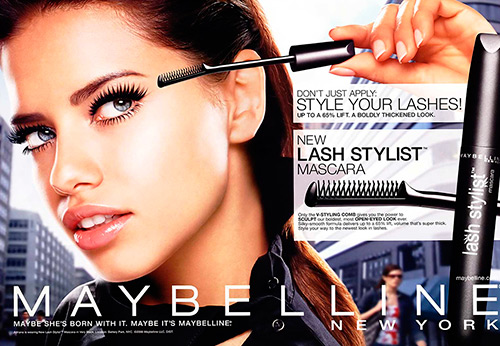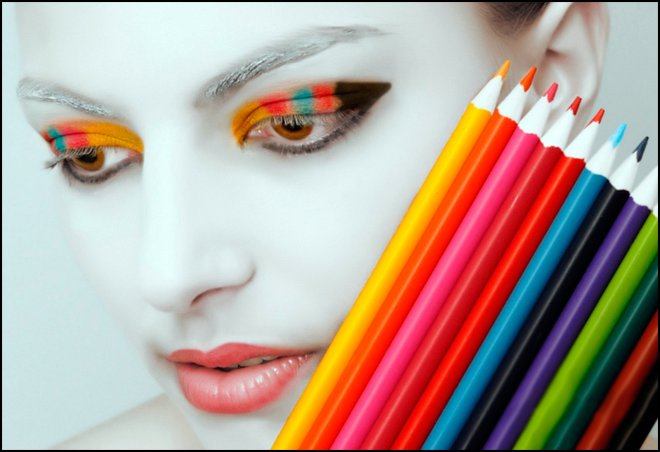Fashion history
Blush for the face - the history of makeup and the composition of the blush
Blush is one of the most ancient cosmetics. The blush serves to accentuate the cheekbones and highlight the cheeks. They also help to give the face a more youthful look.
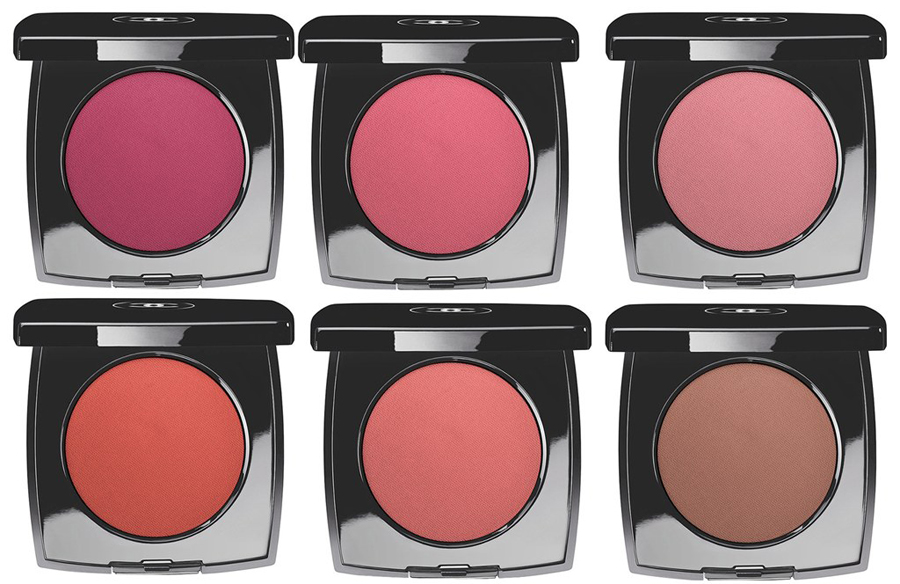
You can even say that blush has accompanied us throughout history. However, blush has had its ups and downs. In some periods of history, blush was bright and noticeable, and in some periods it practically disappeared from our faces.
The history of blush from primitive times to the present day
The appearance of blush, to some extent, can be associated with the custom of painting faces among primitive tribes. Faces were painted before performing magic rituals. In this case, the paint and the patterns drawn by it served as a talisman, protection from dark forces and evil spirits. Also, primitive people painted their faces before hunting as a kind of frightening color. Faces were painted with white, black and red paint. Some tribes, namely the American Indians, covered not only their faces with red paint, but also their bodies.
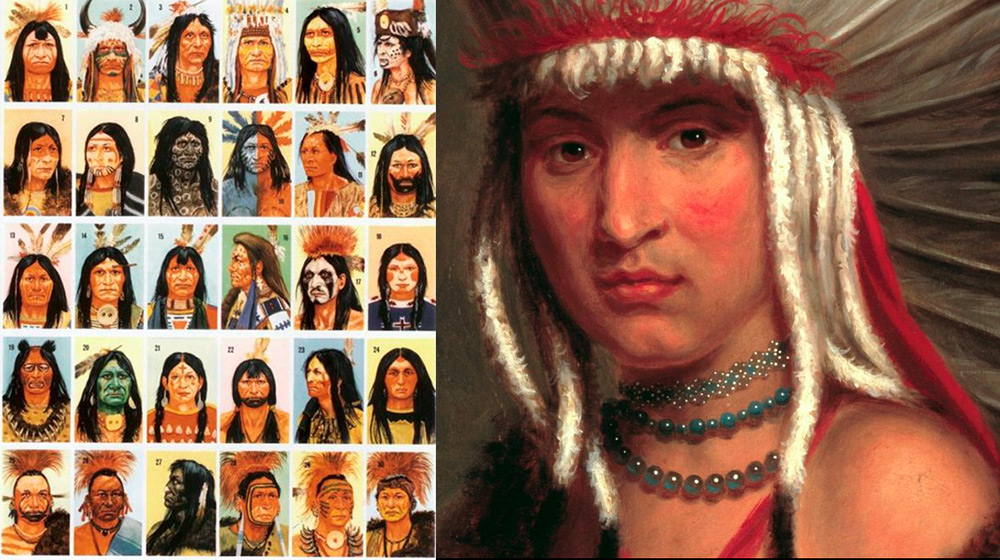
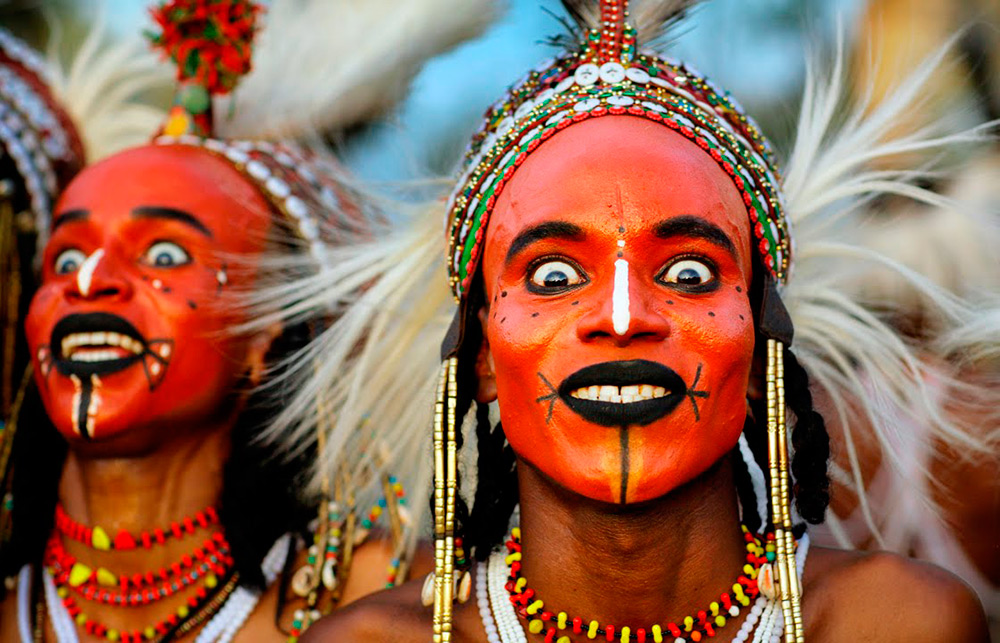
Painted faces
In ancient egypt blush was also famous. Their task was to give the cheeks a red lacquered sheen, to make the cheeks flashy-bright against the background of the eyes circled in black and the eyelids covered with emerald green paint.
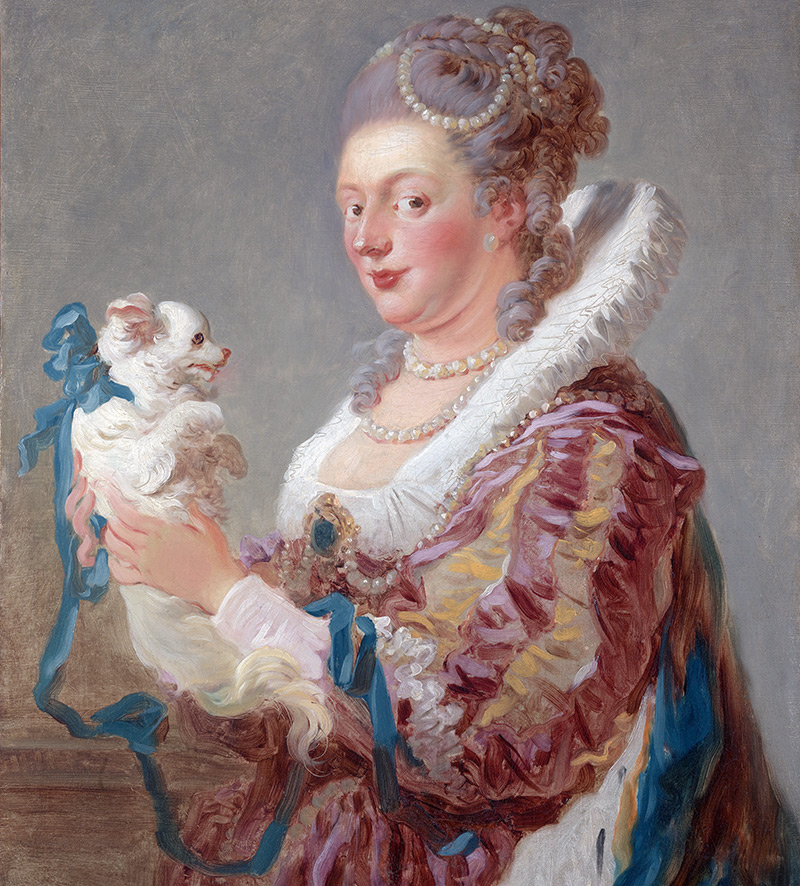
Artist of the 18th century Jean Honore Fragonard
Portrait of a lady with a dog
Blush in Ancient Egypt was made from ocher. Ocher was also used as a red dye by primitive people. To get blush to ocher, the ancient Egyptians added fat and possibly resins or wax.
In ancient Greece, blush was applied in almost the same way as in modern makeup - on the apples of the cheeks.
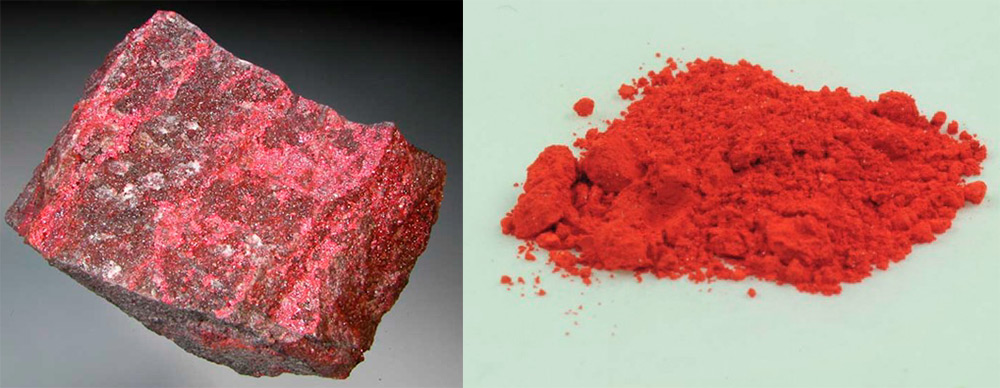
Pigment vermilion
To obtain blush in ancient Greece, natural dyes were initially used - the root of the paederia plant, seaweed. However, then a poisonous dye appeared - vermilion pigment. It was also used for lip coloring. Vermilion pigment is cinnabar powder (mercury sulfide).
Blushed cheeks and in ancient Rome. However, in the period of Antiquity (both in Ancient Greece and in Ancient Rome), bright makeup was condemned. But women, most often from the upper strata of society, still did not shy away from bright blush.
Middle Ages - time without blush
In the Middle Ages, there was no question of ruddy cheeks in the upper strata of society. First, the pallor of the skin in the Middle Ages was proclaimed one of the main advantages of aristocrats. People of noble birth do not work, like peasants, all day in the field and, accordingly, do not sunbathe. Sunburn in those days was considered a sign of a person from the lower strata of society. The aristocrats were distinguished by their porcelain skin. This idea of tanning will exist in Europe until the beginning of the twentieth century.
Secondly, the whole cosmetics in the middle ages was banned. Since the clergy believed that painting a face was deceiving. And lying is one of the deadly sins.
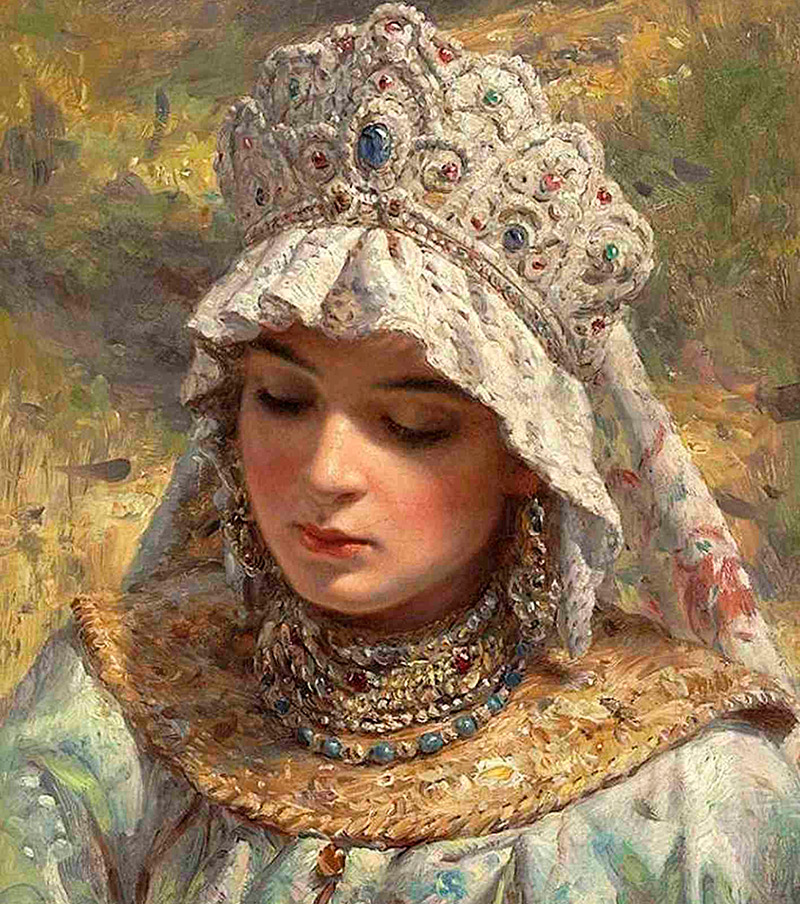
Artist K. Makovsky
Young lady
In the Middle Ages, rosy cheeks were valued only among the peasants. For peasants, a natural blush was considered a sign of health. Peasant women could also use beets to brighten their cheeks.
Beets were also used as a blush in Moscow Russia. In Muscovite Russia, the cheeks of not only the peasant woman, but also the boyar woman blushed. At the same time, the blush had to be as bright as the cheeks of a nesting doll.
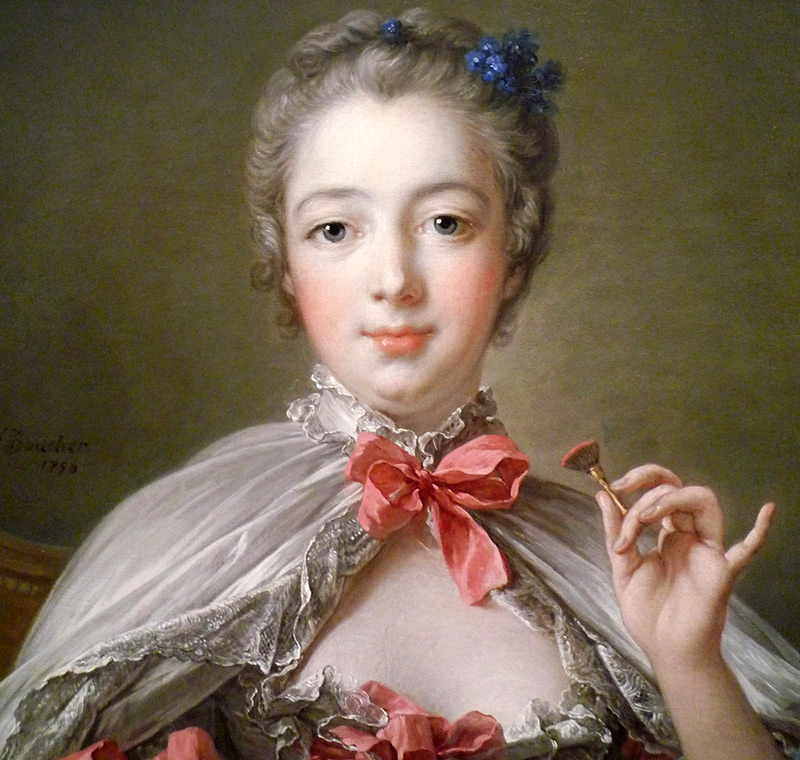
Francois Boucher artist
Marquise de Pompadour
In the 16th-18th centuries in Europe, among aristocrats, pale faces are still in vogue. Faces, in order to give them whiteness, begin to cover with a thick layer of white. And to emphasize such an artificial pallor, the lips are painted with bright red lipstick, and the cheeks - with blush. The paint is still the same as in Antiquity - ocher, cochineal, poisonous vermilion.
XVIII century - the time of the reign of hot pink blush
A particular peak in the popularity of blush falls on the period of the Rococo style - the 18th century. The 18th century may well be called the century of blush. In honor of the trendsetter at the French court of the time of King Louis XV, the Marquise de Pompadour, even one of the shades of pink was named - "pink Pompadour".
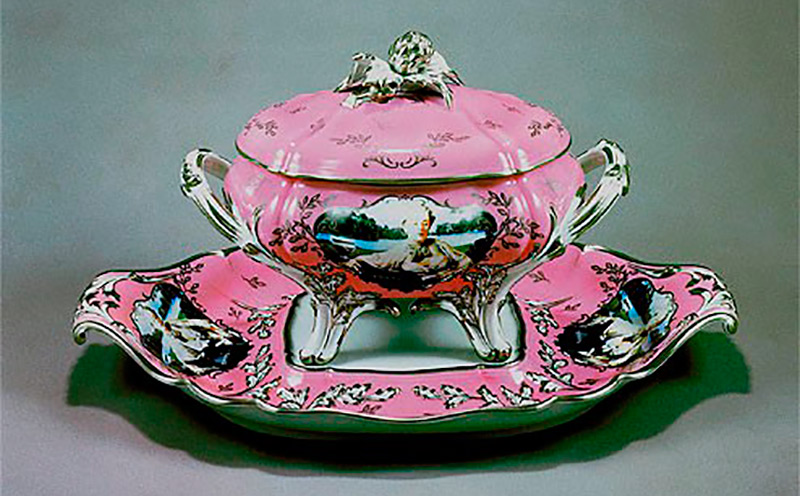
Pompadour pink porcelain
This is the color the Marquis de Pompadour wore.
A French queen Marie Antoinette every morning she performed a whole ritual of applying blush.
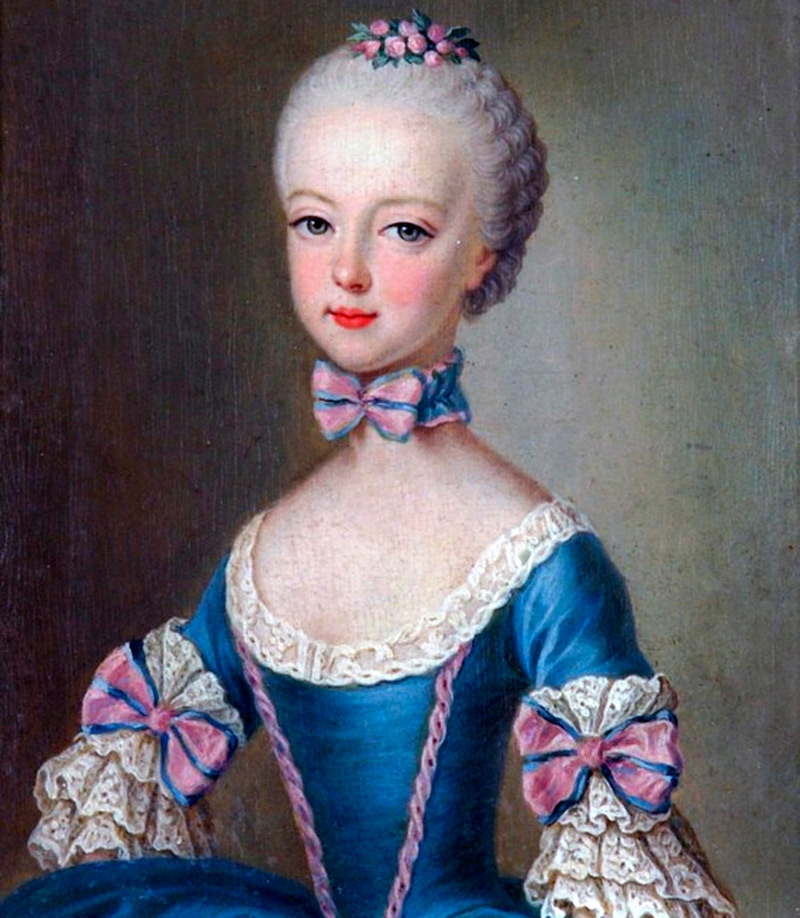
Marie antoinette
Morning ritual of the French queen Marie Antoinette:
1. Non-public part - washing the face and body, applying white on the face and styling the hair
2. Public part - in the presence of the courtiers, the queen applied blush. At the same time, following etiquette, the queen herself could not take jars and puffs. The jars and puffs one after another for some time were served to the queen by the ladies attending her, and she herself applied only a blush to her cheeks.
Marie Antoinette applied blush in the form of circles of bright scarlet color.
In the 17th-18th centuries, blush, like whitewash, was used not only by women, but also by men.
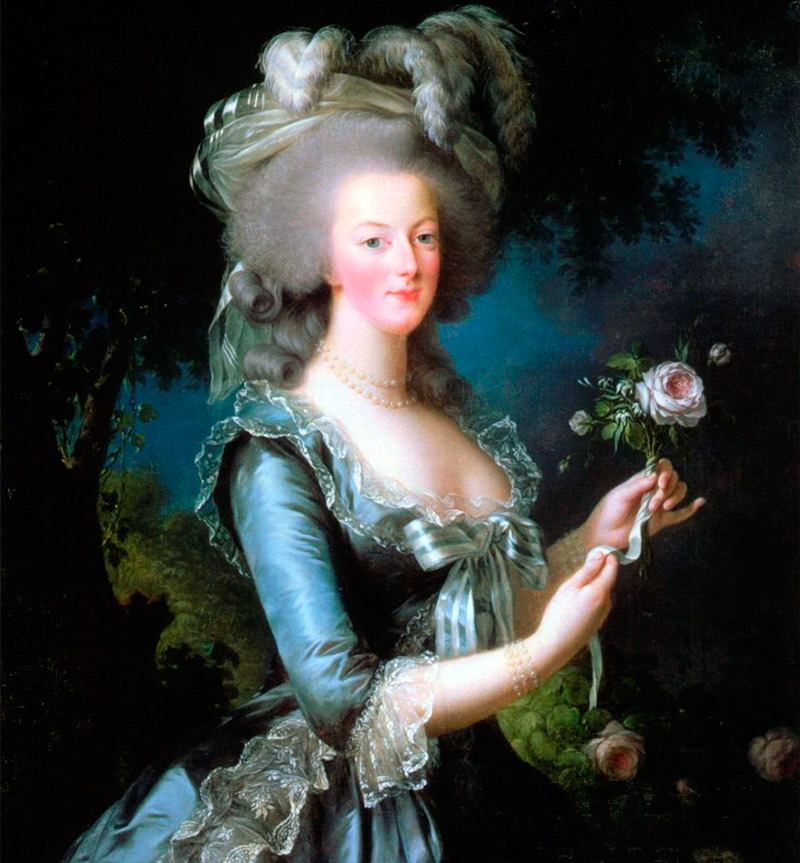
Marie antoinette
In the 19th century, under the influence of strict English fashion, blush was practically not used in high society. Only actresses and singers paint their cheeks. And girls from noble families can only pinch their cheeks and bite their lips to give them brightness.
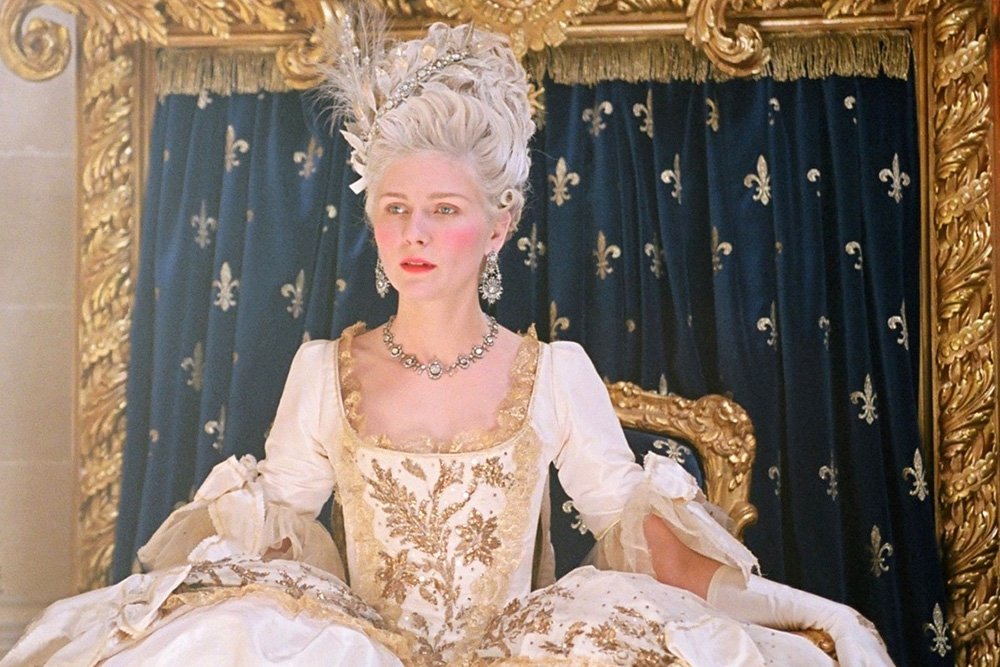
Still from the film "Marie Antoinette"
But at the same time, in the 19th century, blush was already produced in a variety of options - blush in the form of liquid tinctures, wax-like lipsticks, blush in the form of powder. Packages for blush were bottles, jars, books with blotter pages (paper tester strip), and even scraps of cloth.
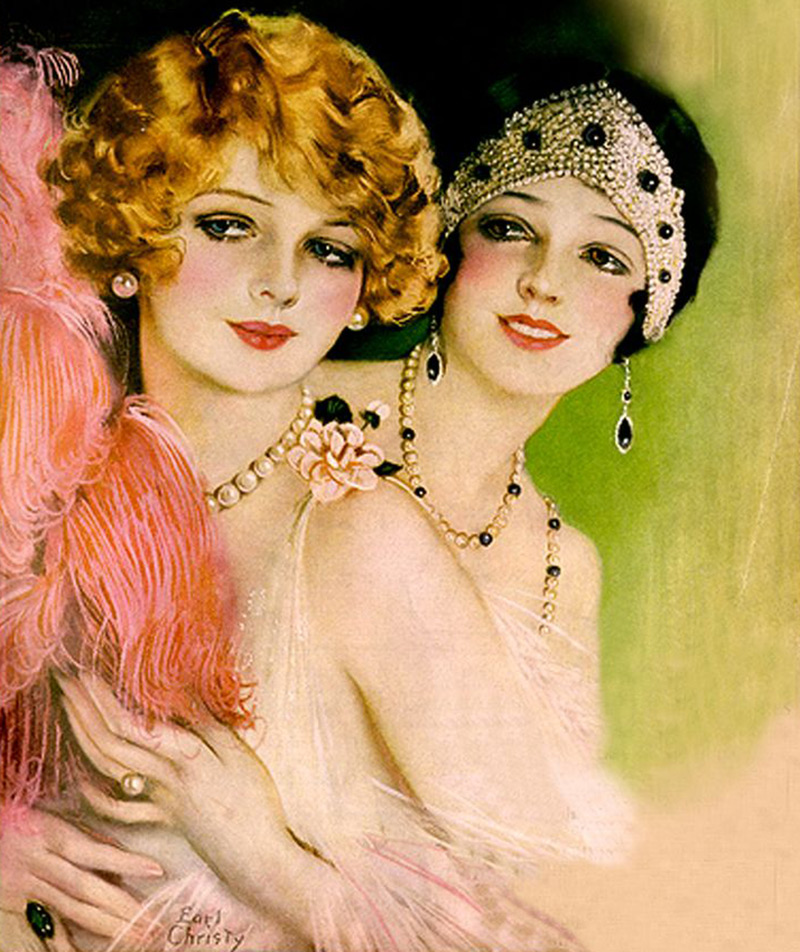
1920s makeup
In the 1920s, blush, like lipstick, became a must-have for girls from all walks of life. But only the fashion for blush does not last long.
XX century - tan versus blush
In the same 1920s, the fashion for tanning appeared. Now tanning is not associated with low origins. Sunburn, on the contrary, becomes a sign of women from high society. And blush for almost the entire twentieth century remains in the background compared to other cosmetics.
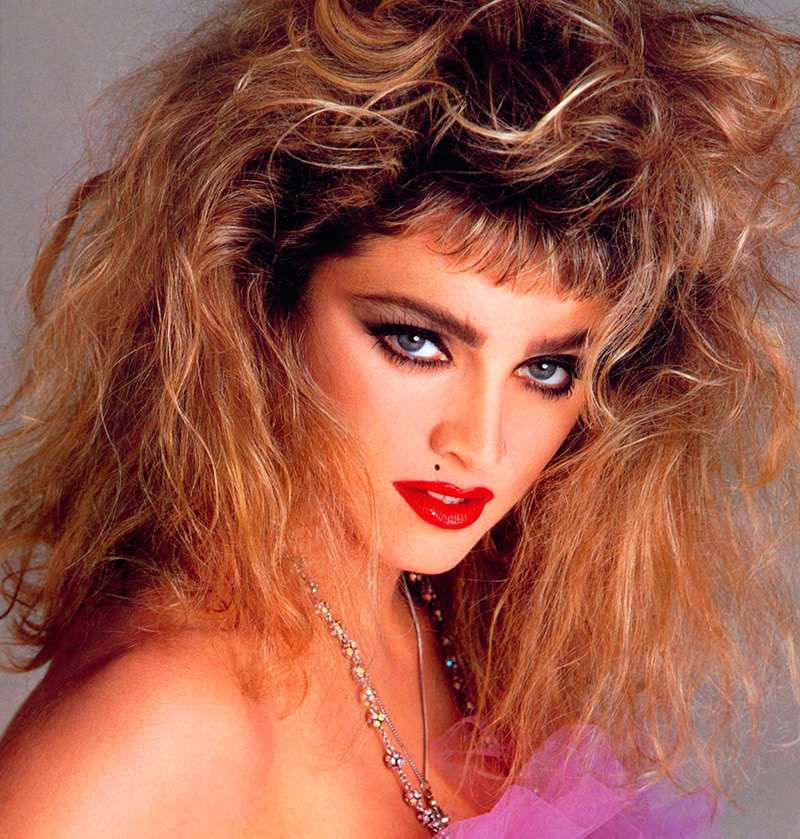
Madonna
1980s makeup
The fashion for blush reappears only in the makeup of the 1970s and 1980s. At this time, the blush was applied in wide and bright stripes, practically without shading, on the cheeks and cheekbones.
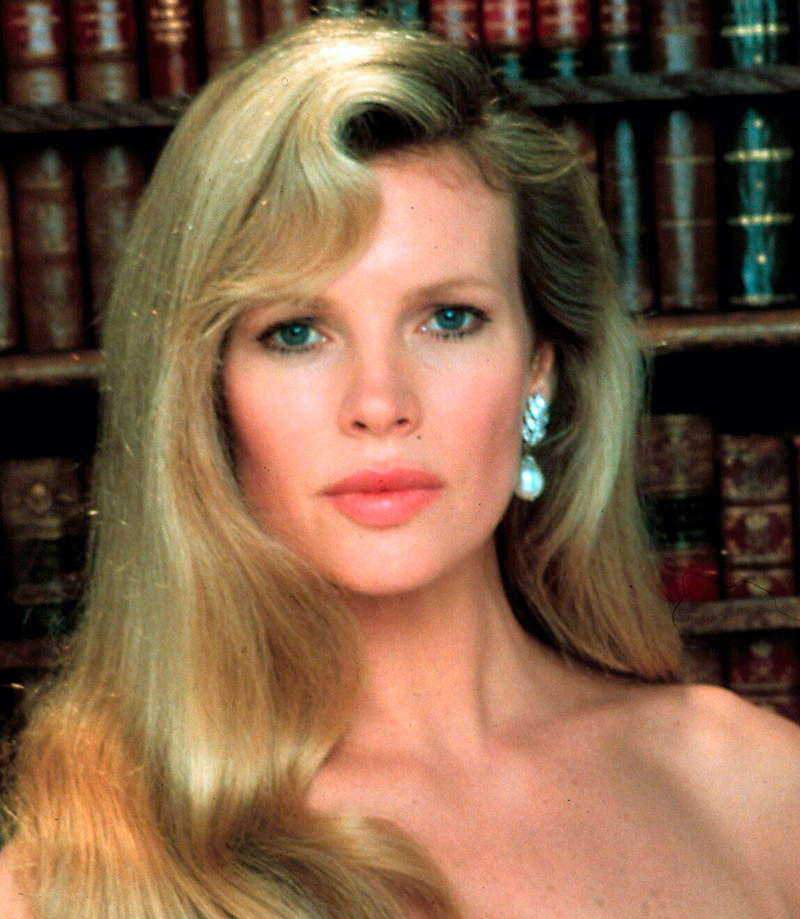
Kim Basinger - actress and model
The fashion for blush has been preserved in the 1990s. Today, in makeup, blush is used to give the face freshness and youth.
The composition of the blush for the face
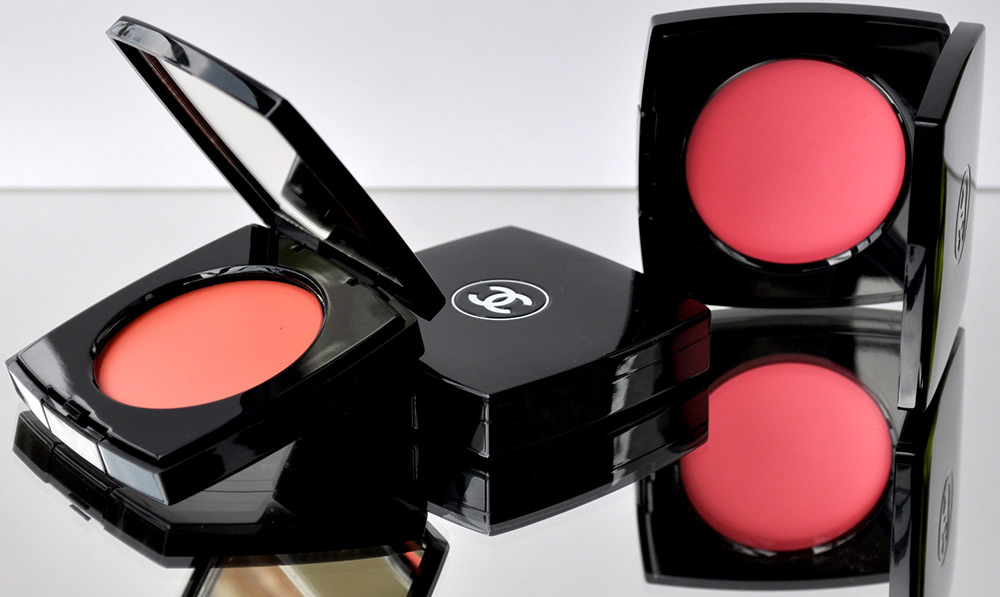
Blush today is a colored powder based on talcum powder. Talc is a crumbly white powder that is greasy to the touch. Dyes are added to the talc. As dyes in blush can be used: carmine, this dye is obtained with the help of insects cochineal, dye safflower or saffron, the coloring properties of this plant were known in Ancient Egypt, synthetic dyes.
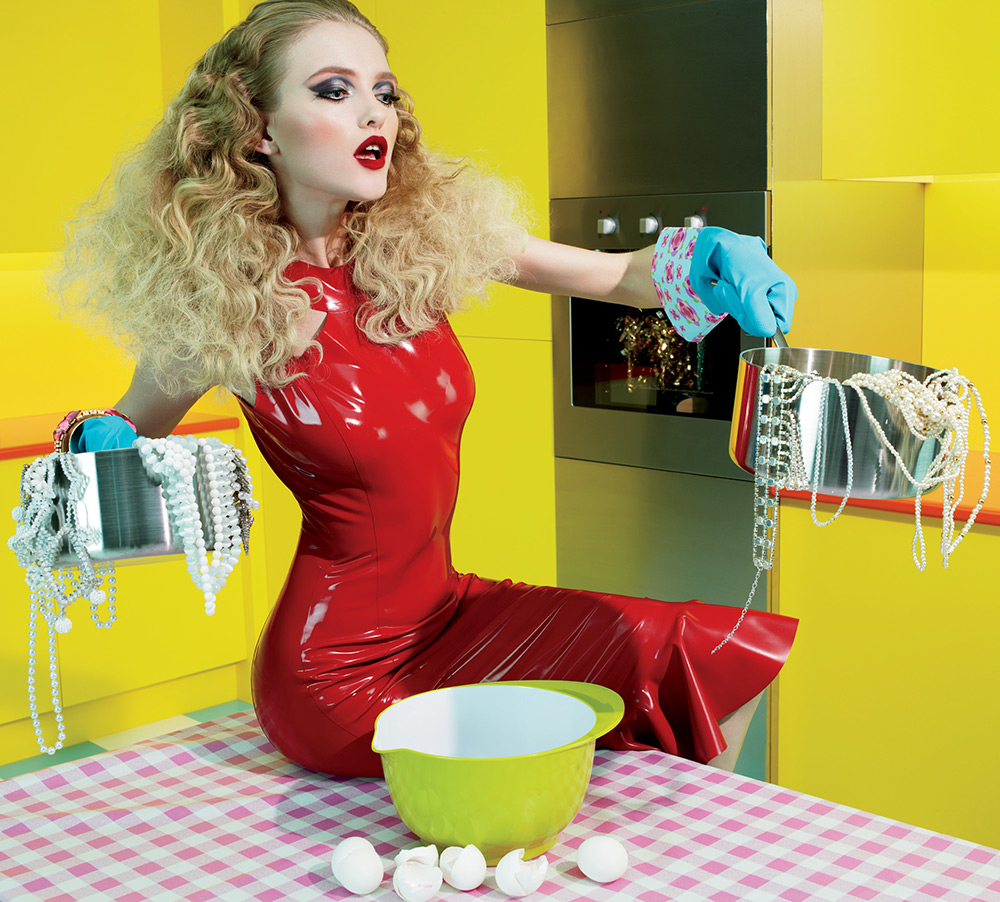
Photographer Miles Aldridge
Synthetic dyes in cosmetics are designated as: FD&C, D&C or Ext, followed by the name of the color (for blush it will be red-red) and the number
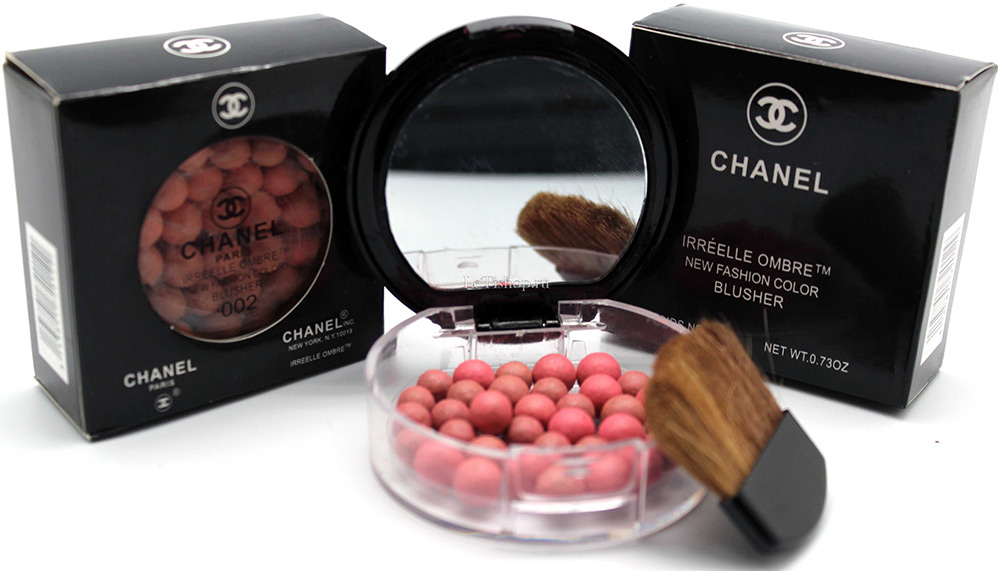
Also, the composition of the blush can include rose water (an aqueous solution of the components of the essential oil of rose), lanolin (wax, which is obtained by boiling sheep wool), zinc oxide (responsible for the density of the coating, least of all it is in dry blush). Cream and liquid blush (they are also more persistent blush compared to dry) contain titanium dioxide, waxes, esters, mineral oils, water. They can add mother-of-pearl and vitamins to the blush.
Comments and Reviews
Add a comment
Rating news
Shades of clothing that make women look younger
What shades of hair make women younger: rules and photos
Funny wedding dresses - photos and ideas
12 most expensive down jackets for the winter
How to look 25 at 40: tips from supermodels
Beautiful schoolgirls
Anti-aging haircuts and hairstyles for women
Fashionable skirts for autumn and winter
Fashionable women's trousers for the cold season
Fashionable and stylish sandals for summer 2024
Spring-summer 2024
 Fashionable dresses and tops with thin spaghetti straps
Fashionable dresses and tops with thin spaghetti straps
 Bandana tops: how to wear stylishly and beautifully
Bandana tops: how to wear stylishly and beautifully
 How to put together the perfect men's wardrobe for the summer
How to put together the perfect men's wardrobe for the summer
 Fashionable shorts for spring-summer 2024
Fashionable shorts for spring-summer 2024
 Fashionable skirts for spring-summer 2024: a guide to online shopping
Fashionable skirts for spring-summer 2024: a guide to online shopping
 The most fashionable dresses spring-summer 2024: styles and colors
The most fashionable dresses spring-summer 2024: styles and colors
 Fashionable total look 2024: ideas of images and trends
Fashionable total look 2024: ideas of images and trends
